I would now like to talk about the HDSDI card. I knew that this card had a very noisy fan from my first "encounter" with a BVM D32. When I got this monitor I didn't even bother to install it until I found a solution for the noise problem.
Some people on the shmups forum talked about a fan replacement for these cards. Apparently you cannot simply replace the fan with some standard fan, for one thing the card does not have a standard fan connector and for another there's some fan control you need to trick, if you fail to do so the monitor will not start due to a fan error.
This image was posted:

Notice the yellow cable? That's responsible for tricking the fan control. Looked easy enough to me.
I began to investigate things a bit more. I installed the card to see if it is actually working. It was. To my suprise I discovered that the fan was running even in standby mode. What oddity is this?
I don't want a fan that is always running. I thought about using the card completely without a fan, install some heat sinks and something to trick the fan control and be done with. That was before I had actually seen what the card looked like. Of course I had seen it from the outside, but it is usually closed with a metal lid, so you cannot see the board itself.
Let's take a look:
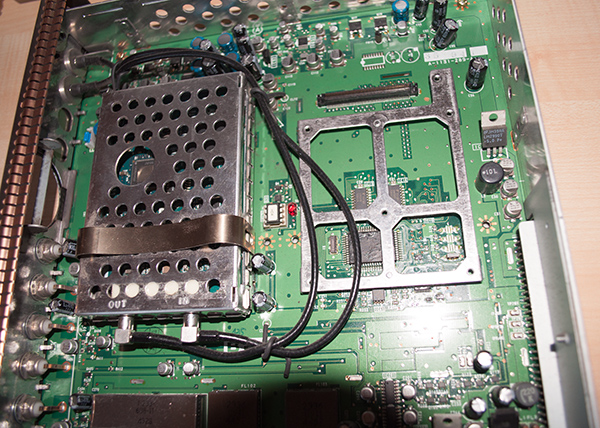
That's the board. The noisy 40mm fan is already removed here. All of the important chips are in that cage. And I have no idea how to open it without damaging anything. So the idea of installing heat sinks was off the table.
By the way, there are two versions of this card. This one with one HDSDI input and another one with two inputs. I think you can see the holder on the right where a second "cage" could be installed.
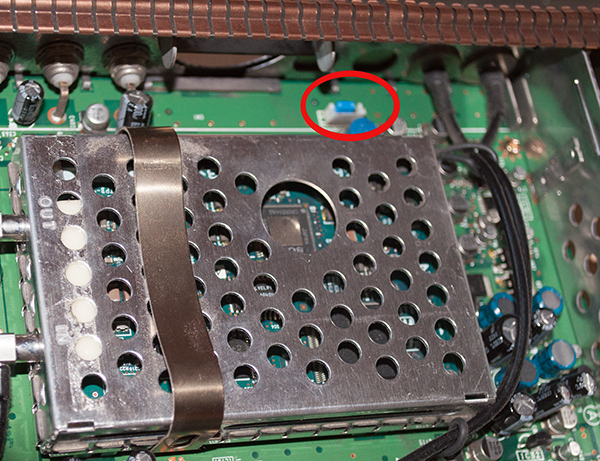
Before making any decisions on how to solve the problem, I wanted to test on how easy it would be to trick the fan control. I didn't want to do any soldering, so I just took a standard jumper (from a PC mainboard or whatever) and put it on the lower two pins of the fan connector.
The monitor booted without a problem. I used the HDSDI card to watch a movie in 1080i for 20 minutes and then turned the monitor off to check the card for heat. The cage indeed had become warm but you could not burn your fingers on it. I think you could use this card during the winter months without any cooling whatsoever. The fan must be a measure for extreme conditions I think.
I also checked if the card produces any heat in standby mode, it does not. Why the fan has to run in standby is puzzling.
Anyway the jumper trick works without any problems.
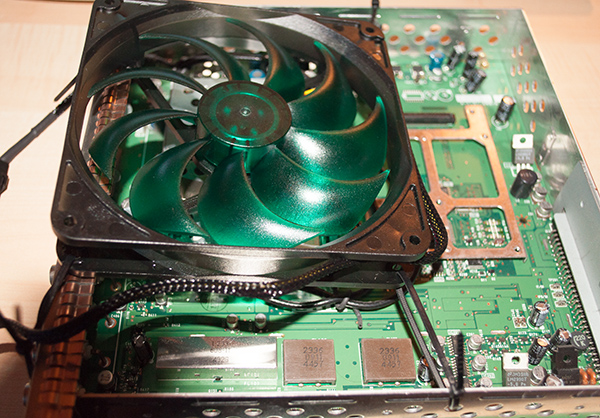
So that's the solution I ended up using. I installed a big 140mm fan. It's almost silent. It's not powered through the monitor itself. I can turn the fan on and off indepently from the monitor. This can be achieved through a 3 pin fan connector to USB adapter cable. The USB cable can then be plugged into a USB charger with an on and off switch.
I used cable binders to fix the fan to the board. Very easy to do and very efficient.
The fan is efficient too, probably more than the stock fan. The cage stays cold in operation.
Downside to such a mod? The card now takes up 4 slots instead of 2. I cannot install another card like this. But that's not really needed anyway.
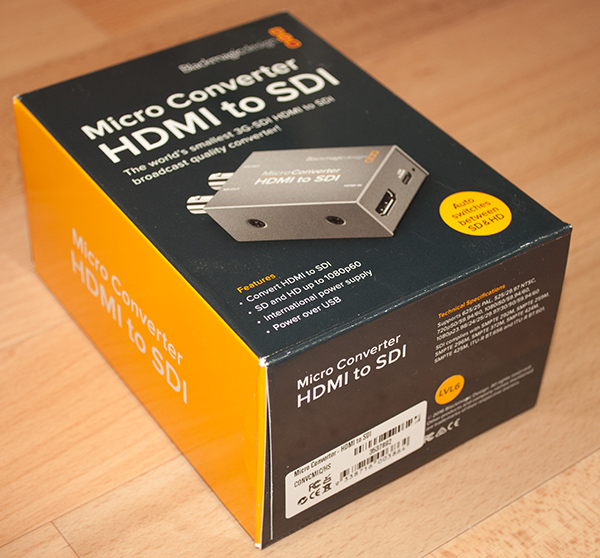
To actually use the HDSDI card, you need something like this, an HDMI to SDI converter. There are cheaper ones than this, but that's the cheapest of the quality converters.
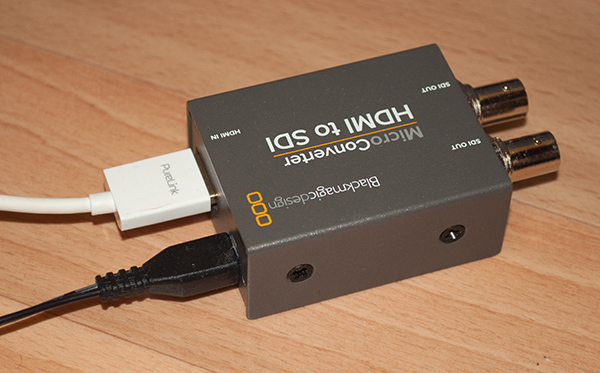
It's a bit bigger than the HDFury Nano GX, but still really small and quite heavy for its size.
I have used it for a few months now. It works very reliably. It adds about 1 frame of lag, so probably not ideal for gaming. It does not like hot plugging. If you want to change the HDMI cable, unplug the USB power cable first, change the HDMI cable, then replug the power.
This device does not support HDCP. Which means you cannot use it with the Playstation 3. The HDMI output from the PS3 always uses HDCP, not just for blu rays but also for games and the operating system. You would need something inbetween the HDMI to SDI converter and the PS3 (or a blu ray player) that removes the HDCP encryption. There are HDMI splitters that can do the job I've heard, but I have not tried it.
I have tested 1080i60, 1080i50, 720p60 and 576i50 with it and these all work. 480p and 576p are not possible, it's simply not part of the SDI standard. 480i60 and 576i50 do not work with the HDSDI card by the way, it's really only for HD. I find this disappointing. For standard definition you would have to use the standard definition SDI card that also comes with the monitor.
But what this converter has problems with is 720p50. The image is shifted to the left and has this black bar:

The thing with this is, I use this converter to watch HD TV and most of the channels I watch get broadcast in 720p50. It just so happens that the HD receiver I'm using allows you to change the output format to whatever standard you want.
I have it set to output everything in 1080i60. With a CRT you want to use the highest refresh that's available, and 60hz is much more pleasant than 50hz. This works really well, I can't see any problems, motions are fluid. If the receiver did not have this option, I could not watch HD TV with this converter.
You can feed this converter with RGB, YCbCr422 and YCbCr444. You always get a picture on the BVM. But the results are the same, the BVM can only do 422 through HDSDI as this test image proofs:
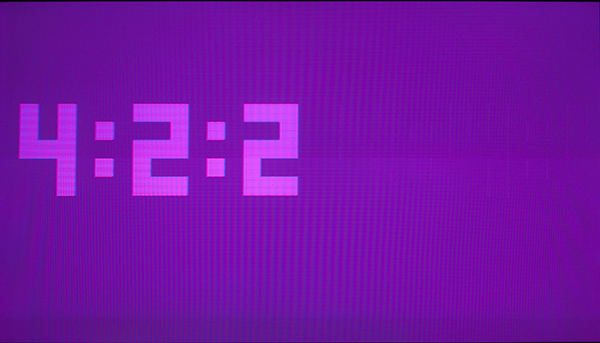
The same image through analog RGB looks like this:
